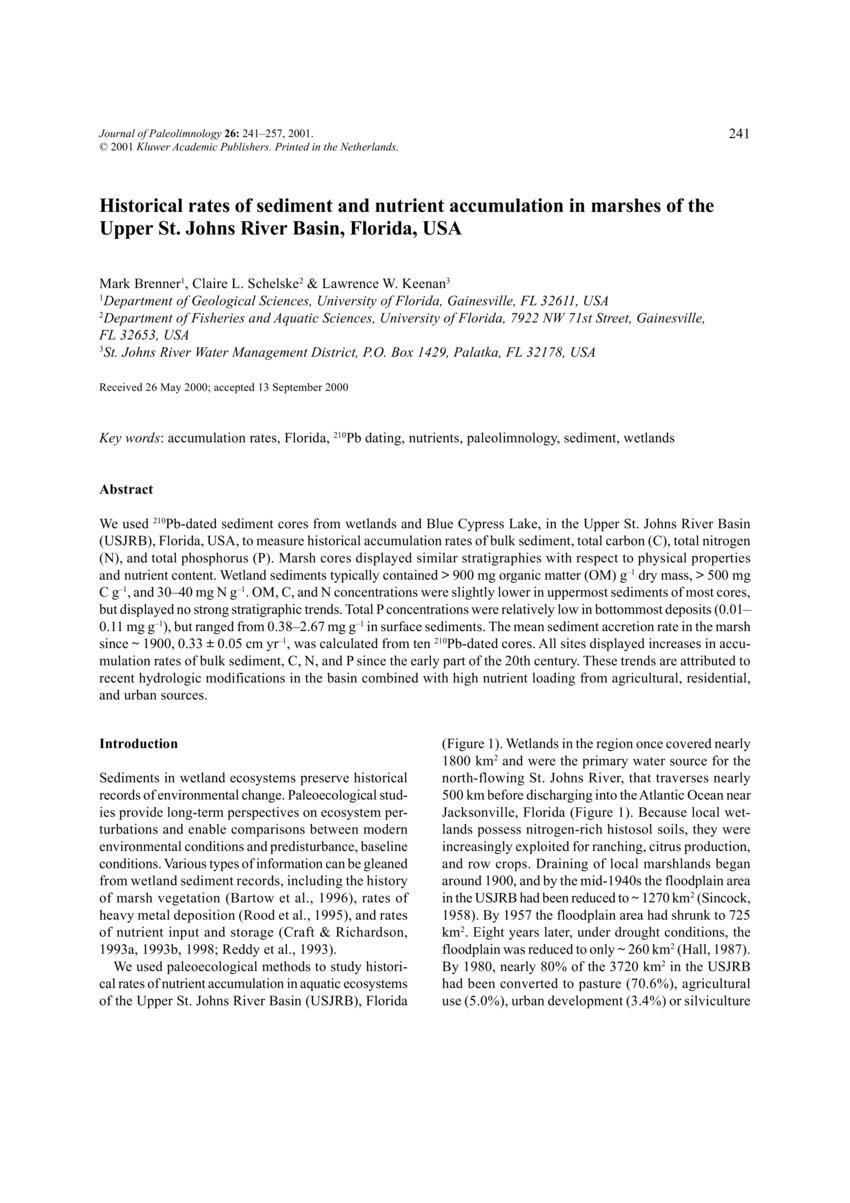Journal Article
AccessHistorical Rates of Sediment and Nutrient Accumulation in Marshes of the Upper St. Johns River Basin, Florida, USA
We used 210Pb-dated sediment cores from wetlands and Blue Cypress Lake, in the Upper St. Johns River Basin (USJRB), Florida, USA, to measure historical accumulation rates of bulk sediment, total carbon (C), total nitrogen (N), and total phosphorus (P). Marsh cores displayed similar stratigraphies with respect to physical properties and nutrient content. Wetland sediments typically contained > 900 mg organic matter (OM) g–1 dry mass, > 500 mg C g–1, and 30–40 mg N g–1. OM, C, and N concentrations were slightly lower in uppermost sediments of most cores, but displayed no strong stratigraphic trends. Total P concentrations were relatively low in bottommost deposits (0.01–0.11 mg g–1), but ranged from 0.38–2.67 mg g–1 in surface sediments. The mean sediment accretion rate in the marsh since ~ 1900, 0.33 ± 0.05 cm yr–1, was calculated from ten 210Pb-dated cores. All sites displayed increases in accumulation rates of bulk sediment, C, N, and P since the early part of the 20th century. These trends are attributed to recent hydrologic modifications in the basin combined with high nutrient loading from agricultural, residential, and urban sources.
Publisher - Springer
Subjects - Sediment; Nutrient Accumulation; Water, Fresh
Citation: Brenner M, Schelske CL, Keenan LW. 2001. Historical Rates of Sediment and Nutrient Accumulation in Marshes of the Upper St. Johns River Basin, Florida, USA. J. Paleolimnol.; 26(3):241-257
